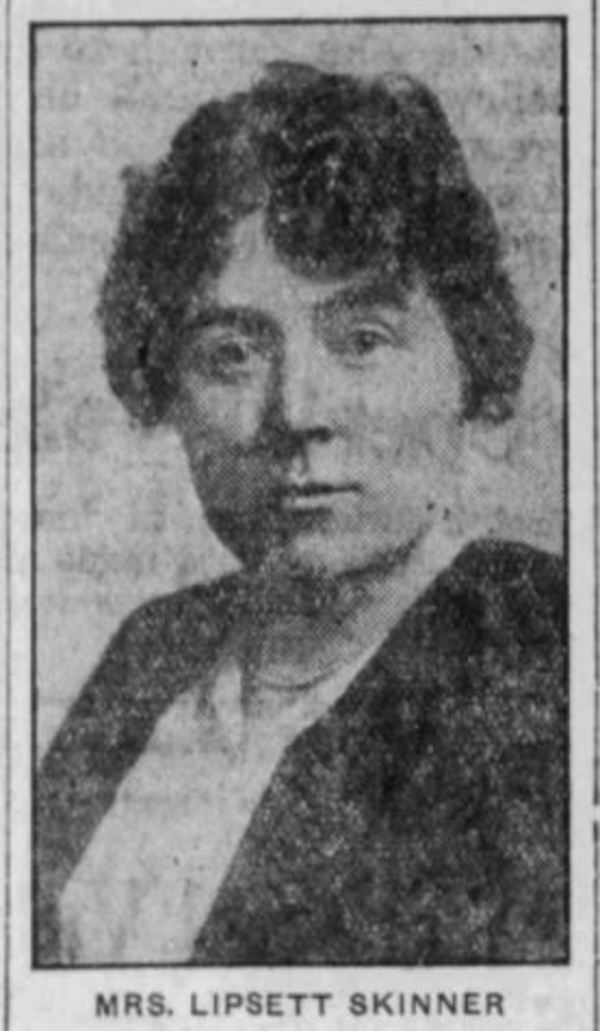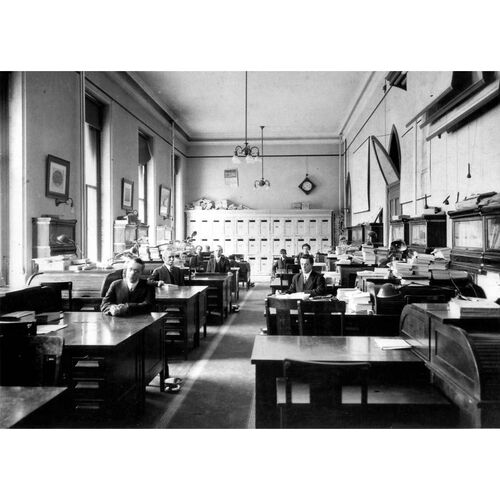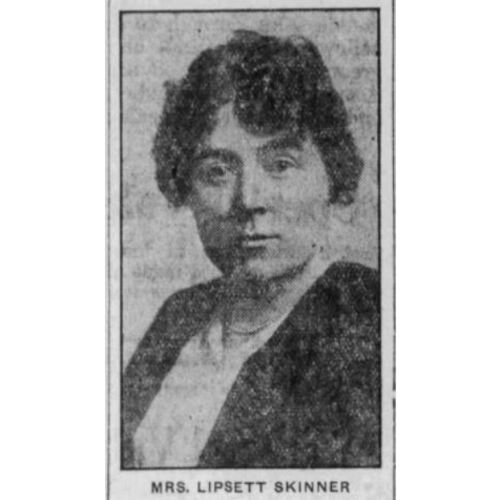
Source: Link
LIPSETT, GENEVIEVE ELSIE ALICE (Skinner), teacher, journalist, and suffragist; b. 29 July 1885 in Kankakee, Ill., daughter of Robert Lipsett and Annie Macdonald; m. 6 June 1911 Robert Curtis Skinner in Winnipeg; they had no children; d. 29 Jan. 1935 in Montreal.
Although Genevieve Lipsett was born in the United States, she spent her early childhood in Toronto and also lived for some time on a wheat farm near Napinka, Man. She returned with her family to the country of her birth when she was 12. In 1900 she entered the Normal College of the City of New York; she graduated three years later and then went back to Manitoba to take up a post as a teacher in a rural school. Despite her youth, she served as a school commissioner. By the time she was 21 she had found her calling, journalism, and had landed a job in the Sunshine department of the Winnipeg Telegram. She would continue there until 1920, becoming well known for her investigative reports and feature articles.
During that 14-year period of career stability Genevieve was impressively active. In 1911 she married a local businessman, Robert Curtis Skinner, but retained her maiden name in her new byline, Genevieve Lipsett-Skinner. The following year, at the request of the federal Department of the Interior, which had hired numerous journalists, she lectured throughout Britain and Ireland on opportunities for women in Canada. After her return, she examined the conditions encountered by some of these new Canadians in the slums of Winnipeg’s North End. Alarmed by the city’s high rate of infant mortality, she published reports in the Telegram. One account, which appeared in July 1913, described the tenements as “fearfully and wonderfully made death traps.”
As she would explain to the Canadian Women’s Press Club, Genevieve recognized that “many of the handicaps of women and children could be removed if more public-spirited women understood the laws as they are, and could constructively work for suitable amendments.” So she entered the Manitoba Law School and in 1917, on graduating with honours, became the first married woman in the province to obtain an llb. There is no evidence that she ever practised – she probably intended to use her legal training for political action. A founding member of the Political Equality League in 1912, she had participated on 28 Jan. 1914 in the famous play, The women’s parliament, in which Manitoba feminists, including Helen Letitia McClung [Mooney*] and sisters Lillian Kate Thomas [Beynon*] and Francis Marion Beynon*, parodied the provincial government’s refusal to consider women’s suffrage. Genevieve acted as the minister of economy and agriculture and behind the scenes she was the production’s business manager. After Manitoban women obtained the right to vote in provincial elections and sit in the assembly under legislation introduced by the Liberal government of Tobias Crawford Norris in 1916, Genevieve saw another challenge. In 1920 she was nominated as a Conservative candidate in the riding of Winnipeg and thus became one of the first Canadian women to contest a provincial election. She was defeated.
By this time Genevieve’s ties to Winnipeg had begun to erode. Her mother had died and she was living separately from her husband. Her interest in politics found a new outlet in parliamentary journalism. She was outraged that the Telegram had just posted a new male reporter to Ottawa without even offering her the job, despite the fact that with her long newspaper experience and law degree she was well qualified to cover the political scene. The editor’s reply, “You are a woman and you would not be admitted to membership in the Parliamentary Press Gallery,” only redoubled her determination to breach that bastion. She left the Telegram and, probably early in 1922, moved to Ottawa, where her connections in Conservative Party circles and the presence of her brother, Robert W. Lipsett, an established political correspondent, were assets she used in her campaign. She began by writing human-interest stories about political figures, many of whom she met at evening events she and her brother hosted in the home they shared. Even though papers across Canada accepted her freelance work, she was denied official membership in the press gallery until she persuaded publisher Robert James Cromie to name her the parliamentary correspondent for his Vancouver Sun in 1922. Although other women had written on federal politics, she was the first to be officially accredited. Her debut in the gallery on 8 March 1922 coincided with the entrance of Agnes Campbell Macphail* to the House of Commons. Both would be the only women in their respective chambers for years to come. In 1934 Genevieve’s portrait was hung in the gallery, the only one of a woman at that time. But Genevieve was no longer there; in 1926 she had moved on to the editorial department of the Montreal Daily Star.
An active member of the Canadian Women’s Press Club since 1913, Genevieve had served as president of the Winnipeg branch for several years and she would hold the same position with the Montreal section for four years. While still in her 20s, she had proposed the creation of a fund to help “any infirm, ailing or needy member who is in temporarily straightened [sic] circumstances financially.” By 1934 she was an applicant herself when ill health prevented her from working. She died the following year, leaving only enough in her estate to host a dinner in her memory for fellow members of the Montreal branch of the women’s press club.
Church of Jesus Christ of Latter-day Saints, Geneal. Soc., International geneal. index. LAC, R2800-0-3. Man., Dept. of Tourism, Culture, Heritage, Sport and Consumer Protection, Vital statistics agency (Winnipeg), no.1911-005425. E. G. Bayne, “Genevieve Lipsett-Skinner, ll.b.,” Maclean’s, 31 (1918), no.14: 113–14. Pierre Berton, “Hard times in the old west,” Canadian Heritage (Toronto), 11 (1985), no.1: 11–14. “Canadian women in the public eye: Genevieve Lipsett-Skinner,” Saturday Night, 25 July 1925: 23. M. [L.] Lang, Women who made the news: female journalists in Canada, 1880–1945 (Montreal and Kingston, Ont., 1999). Linda McDowell, “Some women candidates for the Manitoba legislature,” Man., Hist. and Scientific Soc., Papers (Winnipeg), 3rd ser., no.32 (1975–76): 5–20. Who’s who in western Canada … ( Vancouver), 1911.
Cite This Article
Marjory Lang, “LIPSETT, GENEVIEVE ELSIE ALICE (Skinner),” in Dictionary of Canadian Biography, vol. 16, University of Toronto/Université Laval, 2003–, accessed January 21, 2025, https://www.biographi.ca/en/bio/lipsett_genevieve_elsie_alice_16E.html.
The citation above shows the format for footnotes and endnotes according to the Chicago manual of style (16th edition). Information to be used in other citation formats:
| Permalink: | https://www.biographi.ca/en/bio/lipsett_genevieve_elsie_alice_16E.html |
| Author of Article: | Marjory Lang |
| Title of Article: | LIPSETT, GENEVIEVE ELSIE ALICE (Skinner) |
| Publication Name: | Dictionary of Canadian Biography, vol. 16 |
| Publisher: | University of Toronto/Université Laval |
| Year of revision: | 2014 |
| Access Date: | January 21, 2025 |




